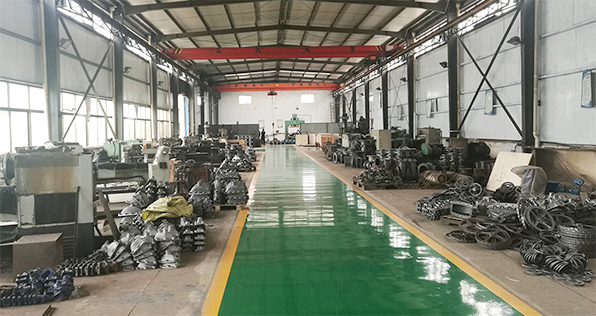Nov . 10, 2024 03:11 Back to list
Durable Cast Iron Metal Seat Gate Valve for Reliable Fluid Control Applications
Understanding Cast Iron Metal Seat Gate Valves A Comprehensive Overview
Gate valves play a crucial role in controlling the flow of liquids and gases in various industrial applications. Among the many types available, cast iron metal seat gate valves have gained popularity due to their durability, reliability, and cost-effectiveness. This article delves into the characteristics, advantages, applications, and maintenance considerations of cast iron metal seat gate valves.
What is a Gate Valve?
Gate valves are linear motion valves that ensure the unrestricted flow of fluid through a pipeline when fully opened. They use a flat or wedge-shaped disc (the gate) that slides between two seats, allowing for precise on/off control without significant pressure loss. Gate valves are distinguished from other types of valves in that they do not have any obstructions in the flow path when fully open, making them ideal for applications requiring minimal headloss.
Features of Cast Iron Metal Seat Gate Valves
1. Material Composition Cast iron is the primary material used in these valves. Known for its excellent casting characteristics, it provides a strong and durable body suitable for various industrial environments. Metal seating surfaces are often added to enhance wear resistance and sealing performance under high pressure and temperature.
2. Temperature and Pressure Ratings Cast iron valves can handle a wide range of temperatures and pressures. However, their specific ratings depend on the type of cast iron used (like ductile iron or gray iron) and the design standards adhered to during manufacturing.
3. Design Variations Cast iron metal seat gate valves come in various designs, such as rising stem and non-rising stem types. This flexibility allows users to choose a valve that best suits their installation requirements and operational environment.
4. Ease of Operation Most gate valves are operated manually via a handwheel, though they can also be automated with electric actuators or pneumatic systems for remote control.
Advantages of Cast Iron Metal Seat Gate Valves
1. Durability The robust nature of cast iron ensures that these valves can withstand harsh conditions, making them suitable for heavy-duty applications such as water supply, sewage treatment, and industrial processes.
2. Cost-Effectiveness Cast iron valves typically have a lower initial cost compared to other materials like stainless steel or bronze, making them a popular choice for budget-conscious projects.
3. Excellent Sealing Capability The metal seats provide superior sealing characteristics. They can handle a wider range of fluids and provide a leak-tight shut-off, which is crucial in many industrial applications.
cast iron metal seat gate valve

4. Corrosion Resistance While cast iron is prone to corrosion, many manufacturers apply protective coatings or use ductile iron to enhance corrosion resistance, making them more suitable for certain environments.
Applications
Cast iron metal seat gate valves are employed in a variety of industries due to their versatility, including
- Waterworks Used in municipal water supply systems to regulate flow and maintain pressure. - Wastewater Treatment Essential in controlling the direction and flow of wastewater in treatment facilities. - Oil and Gas Commonly found in pipelines to isolate sections of the system during maintenance. - Manufacturing Utilized in various processes that require the control of steam, air, or other fluids.
Maintenance Considerations
To ensure longevity and optimal performance, regular maintenance of cast iron metal seat gate valves is vital. Here are some key maintenance tips
1. Routine Inspections Regularly inspect the valve for leaks, corrosion, or wear. Pay special attention to the condition of the metal seats and sealing surfaces.
2. Operate the Valve Periodically Gates that are not regularly exercised can become stuck due to the accumulation of debris or corrosion. Periodic operation helps maintain the valve’s functionality.
3. Lubrication For valves with rising stems, ensure that the threads and moving parts are properly lubricated to facilitate smooth operation.
4. Replacement of Worn Parts Timely replacement of any worn component, including the seals and packing, can prolong the life of the valve and prevent unexpected failures.
Conclusion
In conclusion, cast iron metal seat gate valves are an essential component in various industrial sectors. Their durability, cost-effectiveness, and reliability make them a preferred choice for controlling flow in pipelines. Continued attention to maintenance and understanding their operational characteristics can significantly enhance their performance and lifespan, ensuring efficient operation in the applications they serve. As industries grow and evolve, the importance of reliable equipment like cast iron gate valves remains paramount in supporting operational success.
Share
-
Advanced Technology in Wire and Cable FactoryNewsAug.19,2025
-
Applications of Ball Check Valve in Water Treatment PlantsNewsAug.19,2025
-
How Osy Gate Valve Ensures Leak - Tight SealingNewsAug.19,2025
-
Selection Criteria for Wafer Type Butterfly ValveNewsAug.19,2025
-
Threaded Ball Valve Pressure RatingsNewsAug.19,2025
-
Y Strainer PN16 Cost - Effectiveness AnalysisNewsAug.19,2025


